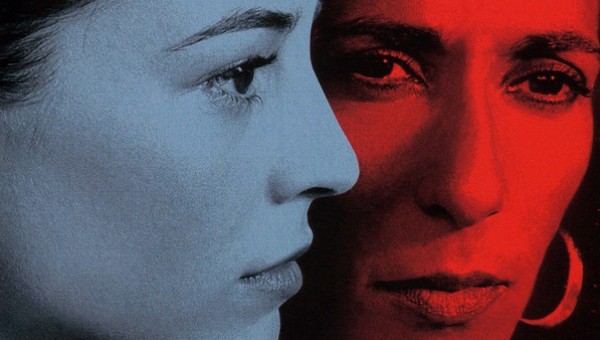 Describing an Almodóvar film is, by the director’s own admission, a ‘monstrous’ task. Far from hinging on the narrative, his films pivot around tone, and a tantalising resistance to be understood in any simplistic manner. Attempts to describe the plot of his 2002 film HABLE CON ELLA (TALK TO HER) to someone who hasn’t seen it inevitably end up depicting the protagonist, Benigno, as a two-dimensional delusional, psychopathic male nurse who rapes a coma patient with whom he is infatuated. Yet, what makes the film so engrossing is the way Almodóvar muddies the waters between good and bad, masculine and feminine, movement and inertia, real life and spectacle.
Describing an Almodóvar film is, by the director’s own admission, a ‘monstrous’ task. Far from hinging on the narrative, his films pivot around tone, and a tantalising resistance to be understood in any simplistic manner. Attempts to describe the plot of his 2002 film HABLE CON ELLA (TALK TO HER) to someone who hasn’t seen it inevitably end up depicting the protagonist, Benigno, as a two-dimensional delusional, psychopathic male nurse who rapes a coma patient with whom he is infatuated. Yet, what makes the film so engrossing is the way Almodóvar muddies the waters between good and bad, masculine and feminine, movement and inertia, real life and spectacle.
The film may be called TALK TO HER but one of its core messages is in fact ‘listen to her.’
TALK TO HER’s tone is notably much more melancholic than his earlier films, as much in its content as in its more subdued aesthetic. The lightly humorous initial presentation of the two male protagonists, Benigno and Marco, becomes entangled in a moral haze. Benigno rapes coma patient Alicia, impregnating her without her consent. As much as his crime is heinous, it is difficult to erase from one’s mind the tender, loving care which he demonstrates for his patient before and after the crime; and even more difficult to simplistically cast him as the villain of the piece. The birth of her child awakes Alicia from her coma, giving her another chance at life. Benigno’s treatment of her, in particular his insistence on talking to her during her coma, is met with a response of sorts. As a corollary, Marco finds it too difficult to talk to his comatose girlfriend, Lydia, and she later passes away. However, if talking offers some kind of therapy, Almodóvar shows in diverse ways that communication that is one-directional cannot be anything but flawed in a relationship. The film may be called TALK TO HER but one of its core messages is in fact ‘listen to her.’
Typically of Almodóvar’s films, gender stereotypes are undermined at every turn. Benigno idolises his deceased mother, whilst the bullfighter Lydia yearns to honour her late father. The slow-motion scenes, framed within the stage of the bull ring, draw attention to the machismo posturing of the bullfighters. The voyeuristic shots of ballet dancer Alicia, displayed within the glass ballet studio opposite Benigno’s flat, further reinforce the idea of gender represented on a stage with an audience in mind. In this sense, Almodóvar upholds whilst also transgressing and undercutting the voyeuristic pleasures of narrative cinema which have been the target of gaze theory since Laura Mulvey’s 1975 essay, Visual pleasure and narrative cinema.
Lydia and Alicia both use their bodies as tools for expression in their respective professions.
The opening scene, featuring Pina Bausch’s Café Müller ballet performance, sets up an oscillatory rhythm of movement and stillness which permeates throughout the film. The story’s narration, by jumping back and forth in time, deliberately contrasts the mobility and immobility of the two female protagonists. Lydia and Alicia both use their bodies as tools for expression in their respective professions. After their accidents, however, this movement is replaced by inertia and coma. The contrast contributes to the tragic, melancholic tone whilst simultaneously exposing and resisting the static nature of the ‘sleeping beauty’ motif. Just like the film as a whole, these two women inhabit a hinterland which is neither life nor death, neither one term nor another, but constantly resisting stasis, definition and mastery.
Yet if you think the film might leave you dissatisfied, rest assured – its deliberate framing (beginning and ending in the same theatre) draws the film together. Almodóvar allows us just a little satisfaction in the idea that gender and morality, both resistant to binaries, are unmasterable.
httpvh://youtu.be/7fl8tyEIXXI

